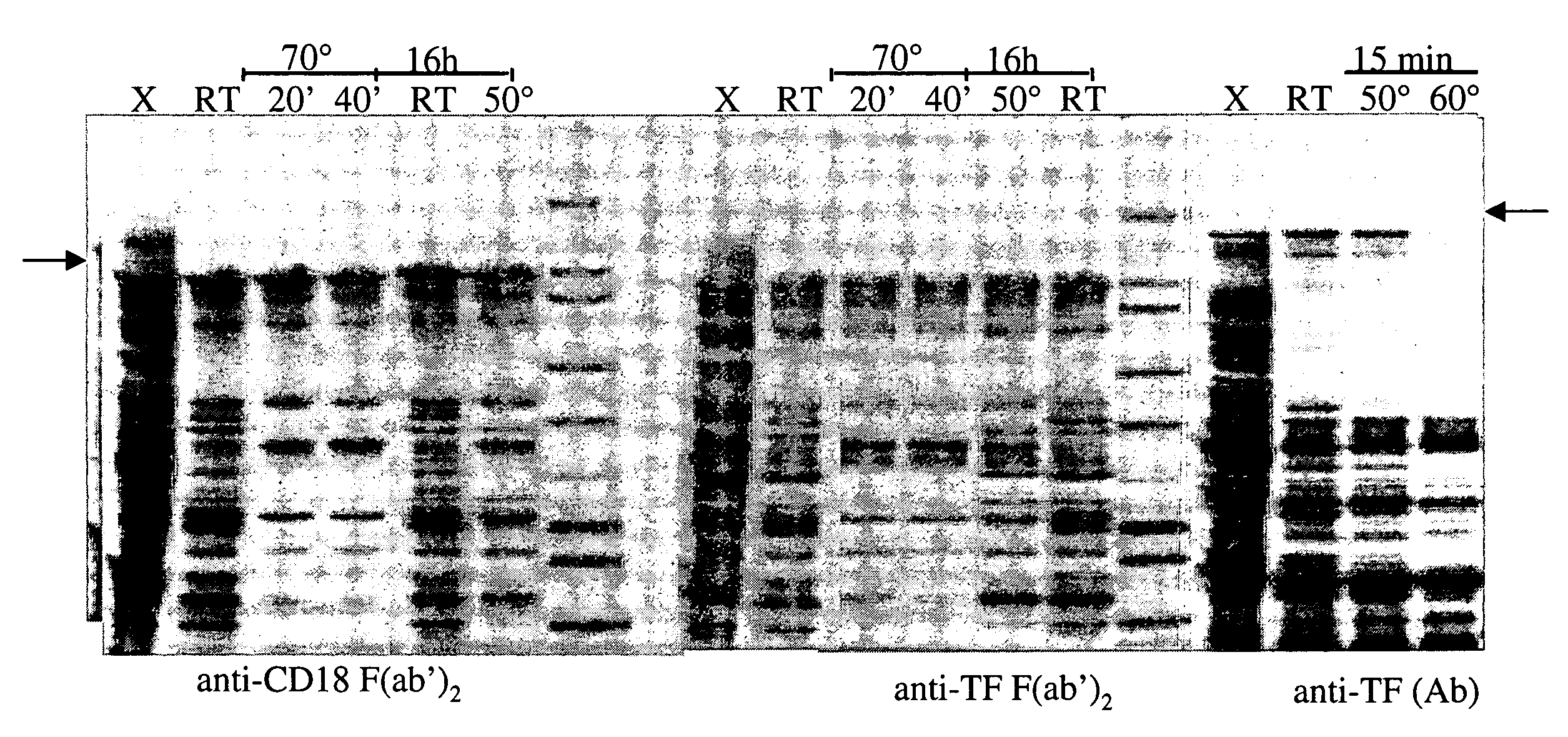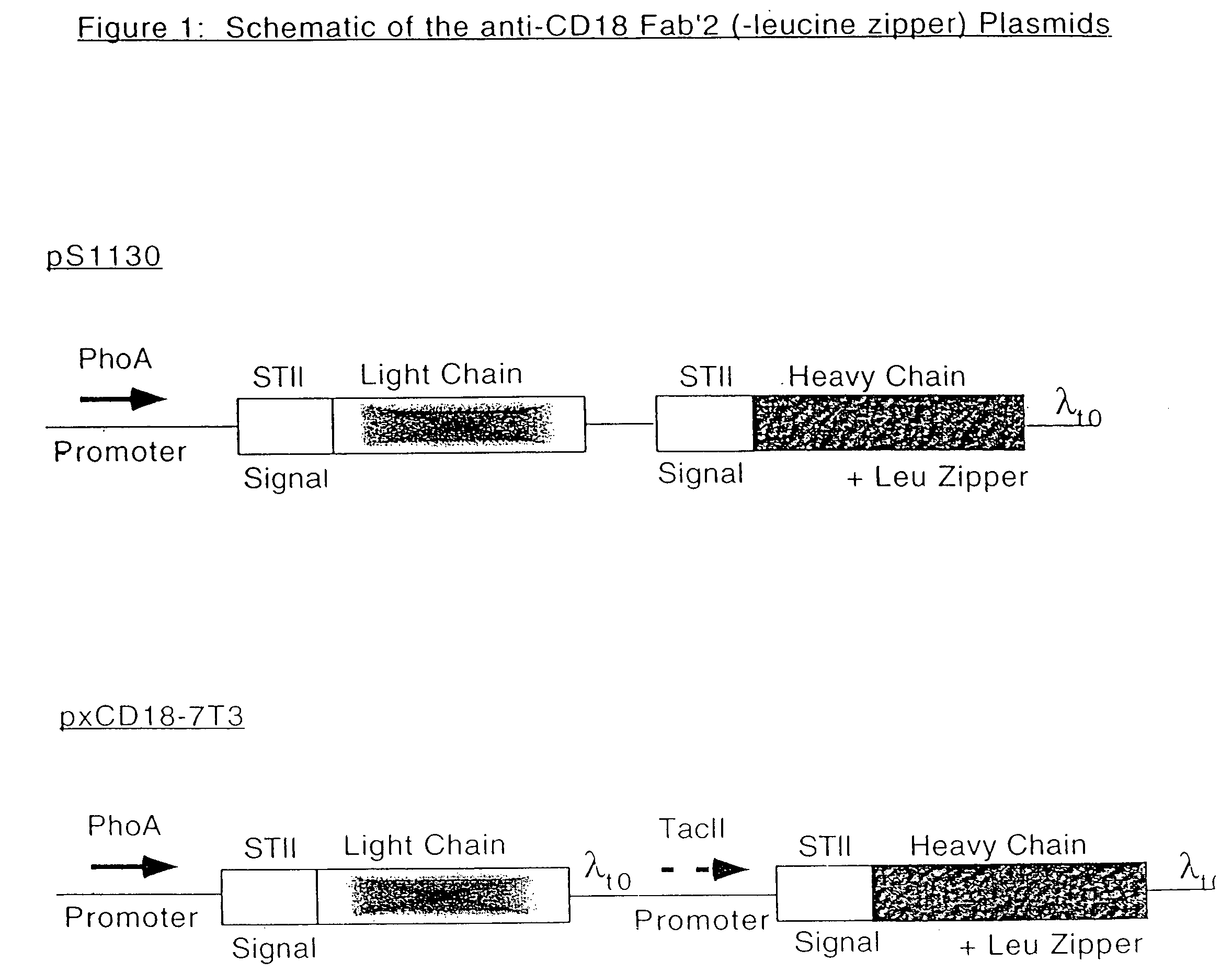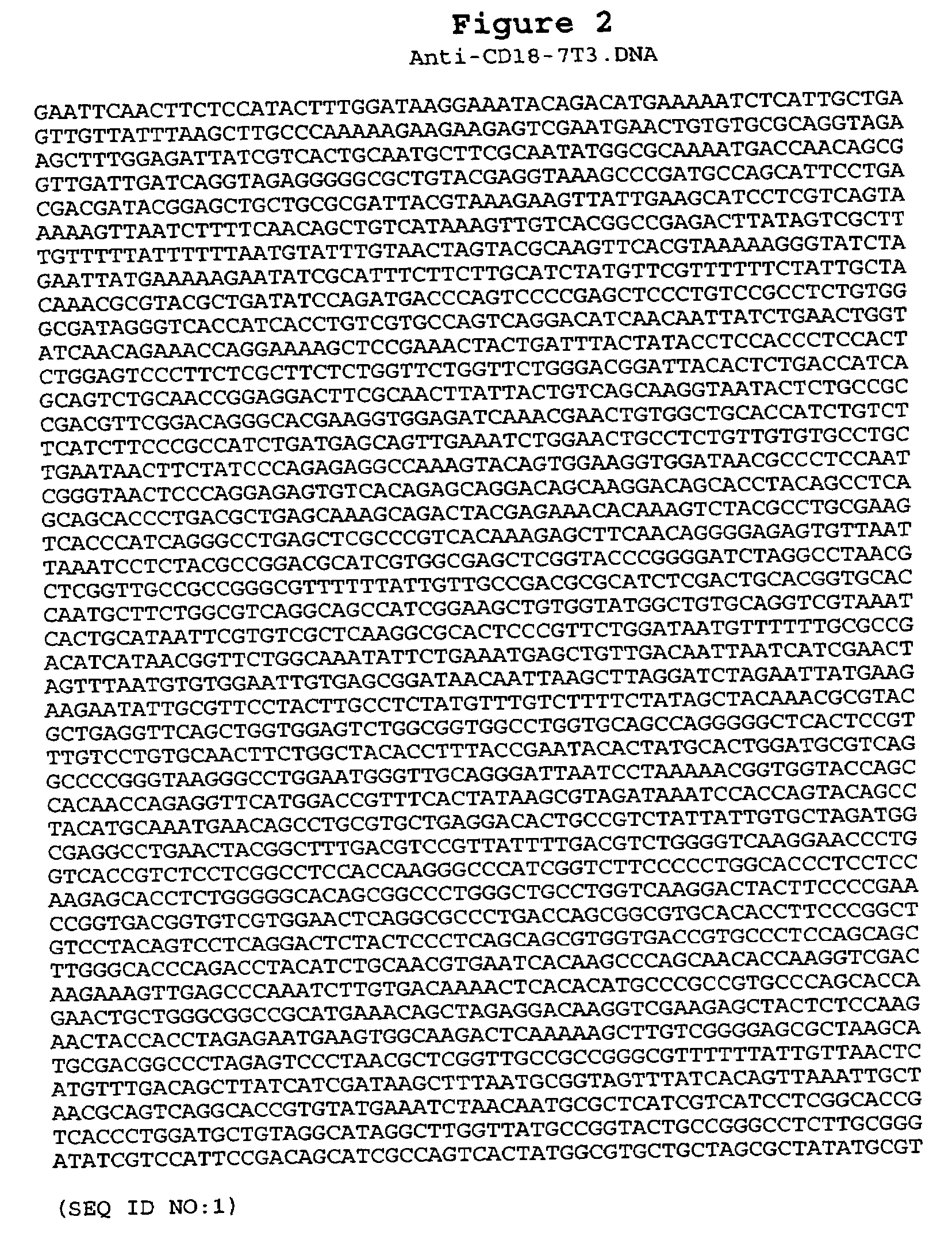Separation of the desired
protein from the mixture of compounds fed to the cells and from the by-products of the cells themselves to a purity sufficient for use as a human therapeutic poses a formidable challenge.
Such disruption releases the entire contents of the
cell into the homogenate, and in addition produces subcellular fragments that are difficult to remove due to their small size.
Temperature increases, which often occur during
processing, may result in inactivation of the
protein.
Complex associations of these contaminants with the protein of interest can complicate the purification process and result in unacceptably low yields.
However, these techniques are not necessarily applicable to all
intracellular microbial proteins, and all have limited application for large-scale
processing, and / or other disadvantages.
For example, while solvents such as
toluene and
chloroform promote release of
intracellular proteins, these substances are known to be toxic and / or carcinogenic (Windholtz et al., The Merck Index 10th Edition: 300 and 1364 (1983)).
Ionic detergents, such as SDS, often irreversibly denature isolated proteins.
The use of
lysozyme, which provides for a relatively gentle means of protein release, is limited because of its relatively high cost and because of the subsequent need to purify the protein of interest from the
enzyme reagent.
In addition, chelating agents, often used to enhance the effectiveness of other permeabilizing / release techniques such as
lysozyme or
toluene extraction, suffer from the
disadvantage of non-specific release of host proteins.
This renders the method unattractive for large-scale processing.
Freeze-thaw treatment also releases
intracellular proteins, although relatively low yields often result in multiple cycles or additional processing requirements.
Unfortunately, most extraction approaches, such as cell
lysis, not only
expose the protein to potential degradation by host cell
proteases, but also make isolation of the protein from other elements of the resulting suspension more difficult.
Where the protein of interest is positively charged, it will tend to bind to any negatively charged molecules present thereby, making purification of the protein virtually impossible.
Unfortunately, each of these initial separation methods suffers from severe disadvantages, especially when used in the manufacture of pharmaceutical reagents.
For example, the large quantities of non-proteinaceous polyanionic contaminants found in bacterial lysates tend to reduce the binding capacities of anion-exchange
chromatography resins.
In addition, regeneration protocols are often rendered ineffective due to tenacious binding of the polyanions to the resins (Spears, supra).
Finally, the
low ionic strength conditions that favor protein binding are ineffective at disrupting polyanion-protein interactions and result in a lack of separation (Scopes,
Protein Purification Principles and Practice, 3rd edition, Cantor eds., p.
PEI also tends to bind irreversibly to many
chromatography resins, thereby limiting their effectiveness and the number of potential chromatography resins available for use post-PEI clarification.
In general, aqueous two-phase extractions systems are difficult to predict and often require an empirical approach for determining conditions that move the protein of interest into the appropriate aqueous phase (Kelley et al., supra).
Techniques that specifically precipitate the protein of interest often result in the
entrapment of the non-proteinaceous contaminants in the precipitate, rendering the separation ineffective (Scopes, supra; Wheelwright, supra).
Where the protein of interest is positively charged, it will tend to bind to any negatively charged molecules present, thereby making purification of the protein by traditional methods very difficult.
 Login to View More
Login to View More 


